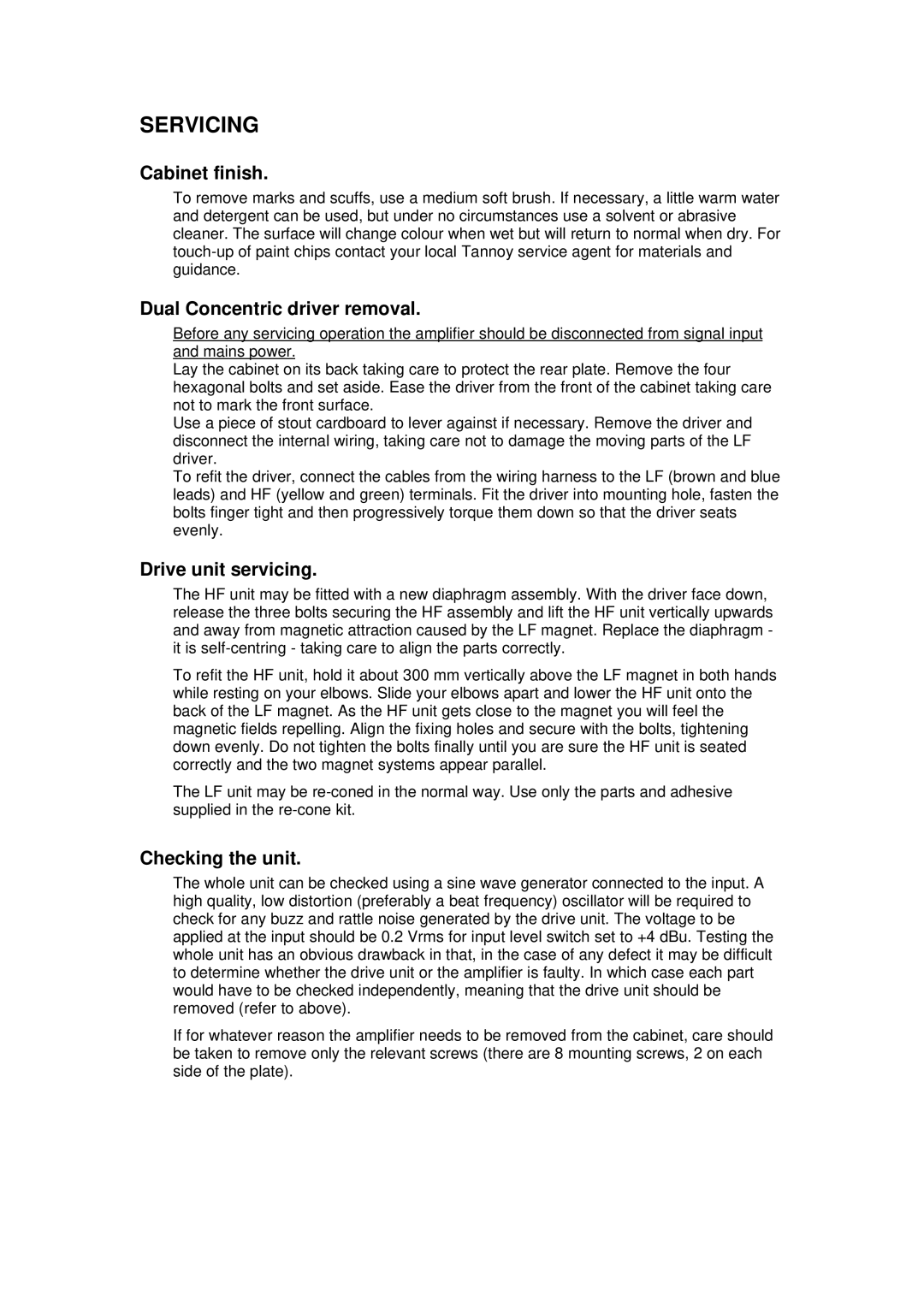SERVICING
Cabinet finish.
To remove marks and scuffs, use a medium soft brush. If necessary, a little warm water and detergent can be used, but under no circumstances use a solvent or abrasive cleaner. The surface will change colour when wet but will return to normal when dry. For
Dual Concentric driver removal.
Before any servicing operation the amplifier should be disconnected from signal input and mains power.
Lay the cabinet on its back taking care to protect the rear plate. Remove the four hexagonal bolts and set aside. Ease the driver from the front of the cabinet taking care not to mark the front surface.
Use a piece of stout cardboard to lever against if necessary. Remove the driver and disconnect the internal wiring, taking care not to damage the moving parts of the LF driver.
To refit the driver, connect the cables from the wiring harness to the LF (brown and blue leads) and HF (yellow and green) terminals. Fit the driver into mounting hole, fasten the bolts finger tight and then progressively torque them down so that the driver seats evenly.
Drive unit servicing.
The HF unit may be fitted with a new diaphragm assembly. With the driver face down, release the three bolts securing the HF assembly and lift the HF unit vertically upwards and away from magnetic attraction caused by the LF magnet. Replace the diaphragm - it is
To refit the HF unit, hold it about 300 mm vertically above the LF magnet in both hands while resting on your elbows. Slide your elbows apart and lower the HF unit onto the back of the LF magnet. As the HF unit gets close to the magnet you will feel the magnetic fields repelling. Align the fixing holes and secure with the bolts, tightening down evenly. Do not tighten the bolts finally until you are sure the HF unit is seated correctly and the two magnet systems appear parallel.
The LF unit may be
Checking the unit.
The whole unit can be checked using a sine wave generator connected to the input. A high quality, low distortion (preferably a beat frequency) oscillator will be required to check for any buzz and rattle noise generated by the drive unit. The voltage to be applied at the input should be 0.2 Vrms for input level switch set to +4 dBu. Testing the whole unit has an obvious drawback in that, in the case of any defect it may be difficult to determine whether the drive unit or the amplifier is faulty. In which case each part would have to be checked independently, meaning that the drive unit should be removed (refer to above).
If for whatever reason the amplifier needs to be removed from the cabinet, care should be taken to remove only the relevant screws (there are 8 mounting screws, 2 on each side of the plate).
